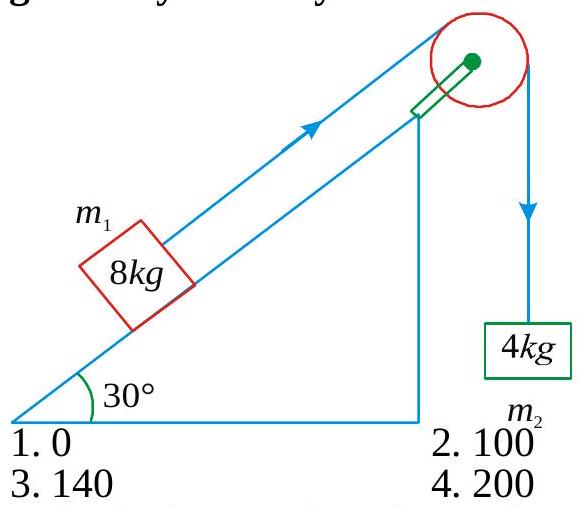270195 A\(20 \mathrm{~kg}\) body is pushed with a force of \(7 \mathrm{~N}\) for \(1.5 \mathrm{sec}\) then with a force of \(5 \mathrm{~N}\) for \(1.7 \mathrm{sec}\) and finally with a force of \(10 \mathrm{~N}\) for \(3 \mathrm{sec}\), the total impulse applied to the body and change in velocity will be
270195 A\(20 \mathrm{~kg}\) body is pushed with a force of \(7 \mathrm{~N}\) for \(1.5 \mathrm{sec}\) then with a force of \(5 \mathrm{~N}\) for \(1.7 \mathrm{sec}\) and finally with a force of \(10 \mathrm{~N}\) for \(3 \mathrm{sec}\), the total impulse applied to the body and change in velocity will be
270195 A\(20 \mathrm{~kg}\) body is pushed with a force of \(7 \mathrm{~N}\) for \(1.5 \mathrm{sec}\) then with a force of \(5 \mathrm{~N}\) for \(1.7 \mathrm{sec}\) and finally with a force of \(10 \mathrm{~N}\) for \(3 \mathrm{sec}\), the total impulse applied to the body and change in velocity will be
270195 A\(20 \mathrm{~kg}\) body is pushed with a force of \(7 \mathrm{~N}\) for \(1.5 \mathrm{sec}\) then with a force of \(5 \mathrm{~N}\) for \(1.7 \mathrm{sec}\) and finally with a force of \(10 \mathrm{~N}\) for \(3 \mathrm{sec}\), the total impulse applied to the body and change in velocity will be

